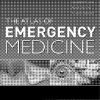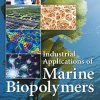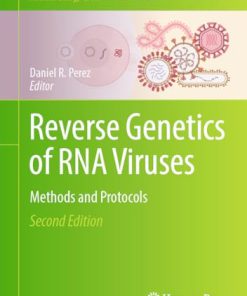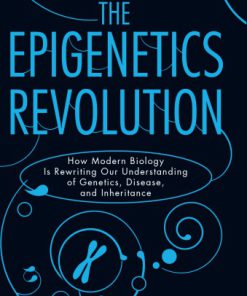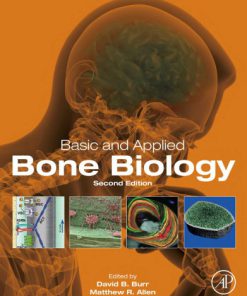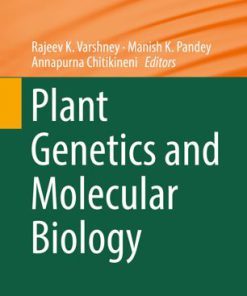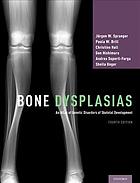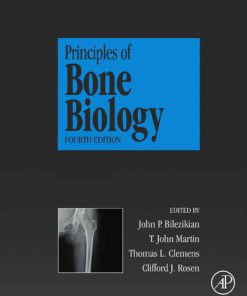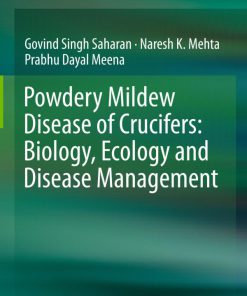Genetics of Bone Biology and Skeletal Disease 2nd Edition by Rajesh Thakker,Michael Whyte 012804182X 9780128041826
$50.00 Original price was: $50.00.$25.00Current price is: $25.00.
Genetics of Bone Biology and Skeletal Disease 2nd Edition by Rajesh Thakker,Michael Whyte – Ebook PDF Instant Download/Delivery:012804182X,9780128041826
Full download Genetics of Bone Biology and Skeletal Disease 2nd Edition after payment

Product details:
ISBN 10:012804182X
ISBN 13:9780128041826
Author:Rajesh Thakker,Michael Whyte
Genetics of Bone Biology and Skeletal Disease, Second Edition, is aimed at students of bone biology and genetics and includes general introductory chapters on bone biology and genetics. More specific disease orientated chapters comprehensively summarize the clinical, genetic, molecular, animal model, molecular pathology, diagnostic, counseling, and treatment aspects of each disorder. The book is organized into five sections that each emphasize a particular theme, general background to bone biology, general background to genetics and epigenetics, disorders of bone and joint, parathyroid and related disorders, and vitamin D and renal disorders.
The first section is specifically devoted to providing an overview of bone biology and structure, joint and cartilage biology, principles of endocrine regulation of bone, and the role of neuronal regulation and energy homeostasis. The second section reviews the principles and progress of medical genetics and epigenetics related to bone disease, including genome-wide association studies (GWAS), genomic profiling, copy number variation, prospects of gene therapy, pharmacogenomics, genetic testing and counseling, as well as the generation and utilizing of mouse models.
The third section details advances in the genetics and molecular biology of bone and joint diseases, both monogenic and polygenic, as well as skeletal dysplasias, and rarer bone disorders. The fourth section highlights the central role of the parathyroids in calcium and skeletal homeostasis by reviewing the molecular genetics of: hyperparathyroidism, hypoparathyrodism, endocrine neoplasias, and disorders of the PTH and calcium-sensing receptors. The fifth section details molecular and cellular advances across associated renal disorders such as vitamin D and rickets.
- Identifies and analyzes the genetic basis of bone disorders in humans and demonstrates the utility of mouse models in furthering the knowledge of mechanisms and evaluation of treatments
- Demonstrates how the interactions between bone and joint biology, physiology, and genetics have greatly enhanced the understanding of normal bone function as well as the molecular pathogenesis of metabolic bone disorders
- Summarizes the clinical, genetic, molecular, animal model, molecular pathology, diagnostic, counseling, and treatment aspects of each disorder
Genetics of Bone Biology and Skeletal Disease 2nd Table of contents:
Section 1: General Background to Genetics
Chapter 1: Introduction to Genetics of Skeletal and Mineral Metabolic Diseases
Abstract
1. Introduction
2. Genetics of skeletal and mineral metabolic diseases
3. Approach to the patient with genetic skeletal/mineral metabolic disease
4. Current genetic tests, their clinical utility, and interpretation
5. Conclusions
Chapter 2: Epigenetics
Abstract
1. Introduction
2. Epigenetic control mechanisms
3. Transgenerational epigenetic inheritance
4. Epigenetics and human disease
5. Conclusions
Chapter 3: Genome-Wide Association Studies
Abstract
1. Introduction
2. Linkage disequilibrium mapping
3. Study design issues in genome-wide association studies
4. The “missing heritability” question
5. Rare variant study designs
6. Conclusions
Chapter 4: Copy Number Variation
Abstract
1. Introduction
2. CNV detection
3. CNV and disease
4. CNV and osteoporosis
5. Conclusions
Acknowledgments
Chapter 5: Genomic Profiling in Bone
Abstract
1. Introduction
2. Conclusions
Acknowledgments
Chapter 6: Functional Genomics
Summary
1. What is functional genomics?
2. Annotating the genome—an emerging picture
3. From annotated sequences to function
4. Interrogation of cellular function: genome-wide gain- and loss-of-function screening in mammalian cells
5. Outlook
6. Summary
Chapter 7: Mouse Models: Approaches to Generate In Vivo Models for Hereditary Disorders of Mineral and Skeletal Homeostasis
Abstract
1. Introduction
2. Methods for generating mouse models
3. Genetic bone diseases associated with defective calcium homeostasis
4. Conclusions
Chapter 8: Prospects of Gene Therapy for Skeletal Diseases
Abstract
1. Introduction
2. Vectors in skeletal gene therapy
3. Methods of gene delivery
4. The immune response to gene therapy vectors
5. Gene therapy for pathologies of the skeletal system
6. Conclusions
Chapter 9: Pharmacogenetics and Pharmacogenomics of Osteoporosis: Personalized Medicine Outlook
Abstract
1. Complexity of phenotypes
2. Genetics of osteoporosis
3. Gene–gene interaction and “missing heritability”
4. Pharmacogenetics of therapeutic response
5. Toward individualized assessment and individualized treatment decisions
6. Conclusions
Chapter 10: Genetic Testing and Counseling
Abstract
1. Genetic testing
2. Genetic testing for skeletal disorders
3. Genetic counseling
Section 2: General Background to Bone Biology
Chapter 11: Biology of Bone and Cartilage
Abstract
1. Introduction
2. Osteoclasts
3. Osteoblasts
4. Cartilage
5. Conclusions
Chapter 12: Overview of Bone Structure and Strength
Summary
1. Introduction
2. Bone biomechanics and the determinants of whole-bone strength
3. Contribution of bone geometry to bone strength
4. Age-related changes in trabecular and cortical bone microarchitecture
5. Contribution of bone microarchitecture to bone strength
6. Contribution of bone structure to fracture risk in humans
7. Conclusions
Chapter 13: Overview of Joint and Cartilage Biology
Abstract
1. Introduction
2. Joint development
3. Joint anatomy
4. Joint homeostasis
5. Joint disease
6. Joint repair
Chapter 14: Osteocyte Biology
Abstract
1. Introduction
2. The fundamental role of osteocytes in skeletal homeostasis
3. Molecular and functional signature of osteocytes
4. Gene deletion and mutations affecting osteocytes
5. Cross talk of bone with other organs/tissues
6. The dying and aging osteocyte
7. Conclusions
Chapter 15: Skeletal Stem Cells/Bone Marrow Stromal Cells
Abstract
1. History and definitions of postnatal stem cells
2. Origins of skeletal stem cells/bone marrow stromal cells
3. Practical considerations—preparation and assessment of SSCs/BMSCs
4. The role of SSCs/BMSCs in postnatal bone turnover
5. The role of SSCs/BMSCs in disease
6. Regulation of SSC/BMSC fate
7. SSCs/BMSCs in tissue engineering and regenerative medicine
8. Conclusions
Acknowledgments
Chapter 16: Osteoimmunology
Abstract
1. Introduction
2. The RANKL/RANK system in bone metabolism
3. Immunological role of the RANKL/RANK system
4. Intracellular signaling for osteoclastogenesis
5. Mechanisms underlying bone destruction in arthritis
6. Bone marrow microenvironment
7. Conclusions
Chapter 17: Integrating Endocrine and Paracrine Influences on Bone; Lessons From Parathyroid Hormone and Parathyroid Hormone-Related Protein
Abstract
1. Bone remodeling and modeling
2. Parathyroid hormone and parathyroid hormone-related protein
3. PTHrP in bone; production in osteoblasts
4. PTHrP function in bone; lessons from PTHrP null mice
5. Anabolic actions of PTH and PTHrP
6. Endocrine PTH, paracrine PTHrP; relationships in development and postnatal life
7. Are osteoclasts involved in the anabolic action of PTH?
8. Growth factors in the local actions of PTH and PTHrP
9. gp130 cytokines as agents of local control of PTH action
10. Sclerostin as a local factor promoting PTH action
11. Other influences of PTH/PTHrP on bone through the bone marrow microenvironment
12. The PTH–PTHrP relationship in vasculature and bone
13. Conclusions
Chapter 18: Genetics of Bone Fat and Energy Regulation
Abstract
1. Introduction
2. The complex relationship of adipose tissue to bone mass
3. A common origin for fat and bone cells
4. Bioenergetics of cells in the bone marrow niche in relation to energy needs and whole body metabolism
5. Control of skeletal and adipose tissue remodeling
6. Anorexia nervosa: energy, bone, and adipose deficiencies
7. Genetics of fat and bone in animal models
8. Genetics of fat and bone in humans
Acknowledgments
Chapter 19: The Cross Talk Between the Central Nervous System, Bone, and Energy Metabolism
Abstract
1. Introduction
2. Specific features of bone and whole-organism physiology
3. Expanding bone biology without premeditation
4. The anticipated functions of osteocalcin
5. Questions raised by the functions of osteocalcin
Chapter 20: Fetal Control of Calcium and Phosphate Homeostasis
Abstract
1. Introduction
2. Overview of fetal and neonatal mineral metabolism
3. Overview of placental mineral transport
4. Overview of endochondral bone development
5. Role of PTHrP
6. Role of PTH
7. Role of PTHrP and PTH in combination
8. Role of estradiol
9. Role of calcitonin
10. Role of vitamin D and calcitriol
11. Role of FGF23
12. Conclusions
Chapter 21: Control of Mineral and Skeletal Homeostasis During Pregnancy and Lactation
Abstract
1. Introduction
2. Skeletal and mineral physiology during pregnancy
3. Disorders of bone and mineral metabolism during pregnancy
4. Skeletal and mineral physiology during lactation
5. Disorders of bone and mineral metabolism during lactation
6. Conclusions
Section 3: Disorders of Bone and Joint
Chapter 22: Osteoporosis Genes Identified by Genome-Wide Association Studies
Abstract
1. Introduction
2. Genome-wide association studies of osteoporosis
3. Genes identified by genome-wide association studies on bone mineral density
4. GWAS in other ethnic groups and for other osteoporosis phenotypes
5. Conclusions
Chapter 23: Osteogenesis Imperfecta
Abstract
1. Introduction
2. Clinical description
3. Genetic description
4. Molecular genetics
5. Animal models
6. Diagnostic aspects
7. Treatment
8. Conclusions
Chapter 24: Osteoarthritis: Genetic Studies of Monogenic and Complex Forms
Abstract
1. Brief clinical description
2. Genetics description
3. Molecular genetics
4. Functional and molecular pathology
5. Diagnostic aspects
6. Treatment
7. Conclusions
Chapter 25: Genetics of Paget’s Disease of Bone
Abstract
1. Clinical features
2. Genetic architecture of Paget’s disease
3. Environmental factors
4. Molecular genetics
5. Animal models
6. Molecular pathology
7. Molecular diagnosis
8. Conclusions
Chapter 26: Mendelian Disorders of RANKL/OPG/RANK/NF-κB Signaling
Abstract
1. Introduction
2. Disorders from constitutive RANK activation
3. Disorders of OPG deficiency
4. Disorders of the NF-κB complex
5. Disorders Of RANKL and RANK deactivation
6. Conclusions
Acknowledgments
Abbreviations
Chapter 27: Skeletal Dysplasias
Abstract
1. Introduction
2. Classification of skeletal dysplasias
3. Diagnosis
4. Multiple epiphyseal dysplasias
5. Metaphyseal dysplasias
6. Conclusions
Chapter 28: Hypophosphatasia and How Alkaline Phosphatase Promotes Mineralization
Abstract
1. Introduction
2. Molecular biology and biochemistry of alkaline phosphatase
3. Physiology of skeletal mineralization
4. Hypophosphatasia
5. Enzyme replacement therapy for HPP
6. Physiological role of alkaline phosphatase explored in hypophosphatasia
Acknowledgments
Abbreviations
Chapter 29: Sclerosing Bone Disorders
Abstract
1. Introduction
2. Clinical aspects of the sclerosing bone disorders
3. Molecular genetics and pathogenic mechanisms
4. Diagnostics, treatment, and genetic counseling
Chapter 30: Fibrodysplasia (Myositis) Ossificans Progressiva
Abstract
1. Introduction
2. Clinical description: fibrodysplasia ossificans progressiva
3. Genetics and molecular genetics of FOP
4. Animal models
5. Functional and molecular pathology
6. Diagnostic aspects
7. Counseling and treatment
8. Conclusions
Acknowledgments
Chapter 31: Thyroid Hormone in Bone and Joint Disorders
Abstract
1. Introduction
2. Thyroid hormone physiology and action
3. Role of thyroid hormones in skeletal growth and development
4. Role of thyroid hormones in bone maintenance and mass
5. Genetically modified mice
6. Role of thyroid hormones in osteoarthritis
7. Conclusions
Acknowledgments
Chapter 32: Disorders and Mechanisms of Ectopic Calcification
Abstract
1. Introduction
2. Disorders of ectopic calcification
3. Animal models
4. Disease mechanisms
5. Conclusions
Section 4: Parathyroid and Related Disorders
Chapter 33: Hyperparathyroidism
Abstract
1. Familial hyperparathyroidism
2. Sporadic hyperparathyroidism
3. Ectopic PTH production
Chapter 34: Hypoparathyroidism
Abstract
1. Introduction
2. Clinical and diagnostic aspects
3. Complex syndromes associated with hypoparathyroidism
4. Abnormalities of the calcium-sensing receptor and G-protein subunit α11
5. Isolated hypoparathyroidism
6. Gene testing in clinical practice
7. Treatment
8. Conclusions
Acknowledgments
Chapter 35: Gsα, Pseudohypoparathyroidism, Fibrous Dysplasia, and McCune–Albright Syndrome
Abstract
1. Introduction
2. Pseudohypoparathyroidism/Albright hereditary osteodystrophy
3. Fibrous dysplasia/McCune–Albright syndrome
Chapter 36: Genetic Disorders Caused by Mutations in the PTH/PTHrP Receptor, its Ligands, and Downstream Effector Molecules
Abstract
1. Introduction
2. The PTH/PTHrP receptor system
3. Human disorders caused by mutations in the PTH-PTHrP signaling pathway
4. Mutations in genes down-stream of the PTH/PTHrP receptor
5. Conclusions
Chapter 37: Genetically Determined Disorders of Extracellular Calcium (Ca2+o) Sensing and Ca2+o Homeostasis
Abstract
1. Introduction
2. Clinical and genetic features of familial hypocalciuric hypercalcemia, including FHH, type 1 (FHH1) (OMIM #145980; alternative designation, HHC1); FHH, type 2 (FHH2) (OMIM #145981; alternative designation, HHC2) and FHH, type 3 (FHH3) (OMIM #600740; alternative designation, HHC3)
3. Clinical and genetic features of neonatal severe primary hyperparathyroidism [OMIM 239200]
4. Clinical and genetic features of autosomal dominant hypoparathyroidism caused by activating mutations of the CaSR [OMIM – #6011298, ADH type 1 (ADH1)] or of GNA11 [OMIM – #615361, ADH type 2 (ADH2)]
5. Clinical and genetic features of Bartter’s syndrome subtype V arising from activating mutations of the CaSR: [OMIM – #601199.0035]
Chapter 38: Multiple Endocrine Neoplasia Syndromes
Abstract
1. Introduction
2. Multiple endocrine neoplasia type 1
3. Multiple endocrine neoplasia types 2 and 3 (MEN2 and MEN3)
4. Multiple endocrine neoplasia type 4 (MEN4)
5. Multiple endocrine and other organ neoplasias (MEONs) syndromes
6. Hyperparathyroidism-jaw tumor syndrome
7. Neurofibromatosis type 1
8. Von Hippel–Lindau disease
9. Carney complex
10. Cowden syndrome
11. McCune–Albright syndrome
Section 5: Vitamin D and Renal Disorders
Chapter 39: Genetic Disorders Of Vitamin D Synthesis and Action
Summary
1. Introduction
2. Biosynthesis of 1,25-dihydroxyvitamin D
3. Hereditary vitamin D–resistant rickets
4. Conclusions
Chapter 40: Heritable Renal Phosphate Wasting Disorders
Abstract
1. Introduction
2. Phosphate homeostasis
3. Phosphate regulation of vitamin D metabolism
4. The heritable renal phosphate wasting disorders
5. Other disorders
6. Conclusions
Acknowledgments
Chapter 41: Renal Fanconi Syndrome, Dent Disease, and Bartter Syndrome
Abstract
1. Brief clinical description
2. Pathophysiology of the disease
3. Etiologies
4. Diagnostic aspects
5. Genetic counseling
6. Treatment
7. Dent disease
8. Bartter’s syndrome
Chapter 42: Inherited Magnesium Disorders
Summary
1. Introduction
2. Familial hypomagnesemia with hypercalciuria and nephrocalcinosis (FHHNC)
3. Primary hypomagnesemia and secondary hypocalcemia (HSH)
4. Isolated autosomal recessive hypomagnesemia (IRH)
5. Autosomal dominant renal hypomagnesemia with hypocalciuria
6. Gitelman syndrome
7. Hypomagnesemia in Bartter syndrome
8. Autosomal dominant hypocalcemia
9. Seizures, sensorineural deafness, ataxia, mental retardation, and electrolyte imbalance (SeSAME Syndrome)/epilepsy, ataxia, sensorineural deafness, and tubulopathy (EAST syndrome)
10. KCNA1/Kv1.1 mutation and its association with isolated hypomagnesemia
11. Hypomagnesaemia with mitochondrial inheritance
12. CNNM2 mutations in dominant hypomagnesemia
13. Treatment and counseling
Chapter 43: Genetic Hypercalciuria: A Major Risk Factor in Kidney Stones
Abstract
1. Introduction
2. Clinical description and definition
3. Human kidney stones and hypercalciuria: a complex genetic trait
4. Monogenetic causes of hypercalciuria
5. Animal models
6. Clinical pathophysiology
7. Counseling and treatment
People also search for Genetics of Bone Biology and Skeletal Disease 2nd :
bone genetics
a skeletal disease
the genetics of sickle cell anemia biology corner answer key
genetic bone diseases list
genetics and bone density
Tags:
Rajesh Thakker,Michael Whyte,Disease,Genetics,Biology
You may also like…
Politics & Philosophy
The Bioarchaeology of Metabolic Bone Disease 2nd Edition Megan Brickley
Biology and other natural sciences - Molecular
Biology and other natural sciences - Human Biology
Biology and other natural sciences - Genetics


